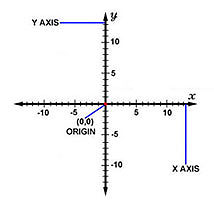Symmetry

The decorative designs on many native baskets are geometric. Different decorative shapes are created either through different methods of weaving the materials that make up the basket or by weaving in colored grasses over the main basket material (this is also called "false embroidery". There are many possible designs, but the most commonly used designs have been given names by the Tlingit and other tribes. Most of these designs utilize simple geometric shapes in various combinations and patterns. Furthermore, the designs are often presented as being symmetrical in some way or another.
What Is Symmetry

(Image scanned from Paul, Frances. 1944. Spruce Root Basketry of the Alaska Tlingit. Lawrence, Kansas: Haskell Press.)
Many animals have bodies in which the right half is the mirror image of the left half. That is called "reflection symmetry." Some things have reflection symmetry between top and bottom. Footballs and soup cans, for example, have one shape that is the same for top and bottom, and a different shape that is the same for left and right.
Many Pacific Northwest basket designs display various forms of symmetry. The decorative design on the basket on the right displays reflection symmetry.
Rotational


(Color image courtesy of Teri Rofkar);(Black and white image scanned from Paul, Frances. 1944. Spruce Root Basketry of the Alaska Tlingit. Lawrence, Kansas: Haskell Press.)
Rotational symmetry is when you have a shape and rotate it around a single point. Here are some basket designs that display rotational symmetry.
Reflected

If you have the same shape reflected in both directions (top-bottom, left-right), it is called four-fold symmetry. Four-fold symmetry is a deep design theme in many Native American cultures. It is used as an organizing principle for religion, society, and native technology. Many native languages, for example, use base four counting. Teepees are often made with four base poles, each placed in one of the four directions. Prayers are often offered to "the four winds." Left is a Tlingit design that displays four-fold symmetry.
Coordinate Systems


(Image scanned from Paul, Frances. 1944. Spruce Root Basketry of the Alaska Tlingit. Lawrence, Kansas: Haskell Press.)
Since most native baskets are made up of rows and columns of roots or other materials, they make up a grid, like a Cartesian coordinate system. A Cartesian graph can be used to visualize basket decorative designs very well. It is also very easy to observe how symmetry works in the basket designs when we use a Cartesian graph to analyze them. Furthermore, we can use a Cartesian graph to create our own symmetrical patterns, whether they demonstrate reflection symmetry across one axis, across two axes, or rotational symmetry. Using the Basket Weaver software, you can apply a Cartesian graph to create patterns commonly seen in native basket designs, or create your own original designs.